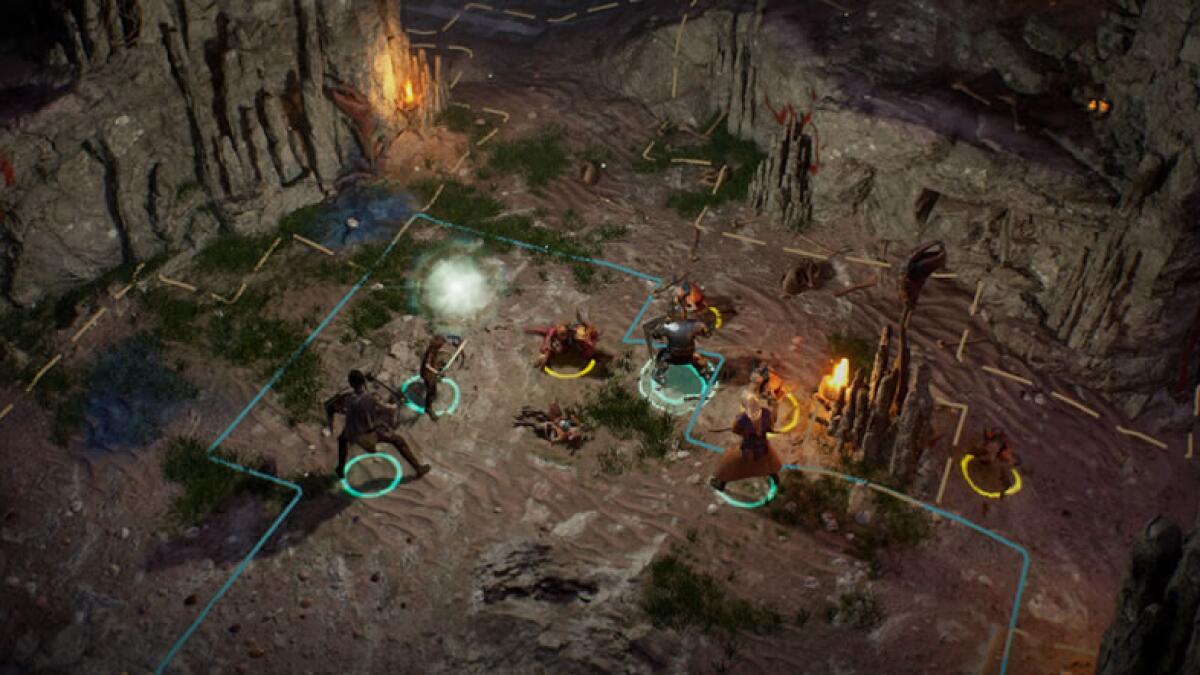
Solasta 2 Combat Guide – Turn‑Based Tactics, Weapon Masteries & New Spells
Turn‑Based Grid Combat
Combat in Solasta II remains turn‑based on a square grid. Outside of combat, movement is freeform: Once initiative begins the game switches to a grid and uses the D&D action system. Characters can move up to their speed, take an Action (attack, cast a spell, dash, dodge) and a Bonus Action (e.g., off‑hand attack, Cunning Action, casting certain spells). Reaction abilities such as Opportunity Attacks or Counterspell trigger automatically when conditions are met. A Ready Action system is planned but not yet available. Survey data shows it is the most requested combat feature.
Weapon Masteries add extra tactical depth: a sword with the Cleave mastery can hit an adjacent second target, while a spear with Push can shove enemies back. Choose weapons that complement your class features. Heavy weapons combined with Great Weapon Master feat can deliver huge damage, especially with the fighter’s Action Surge. Light weapons with Nick or Vex mastery suit rogues and dual‑wielders.
Spells and Metamagic
Spells follow the 2024 PHB: They require verbal components, so casting while silenced will fail. Some spells allow players to swap damage types (e.g., True Strike and the sorcerer’s Transmuted spell metamagic). Homebrew spells like Annoying Bees and Holy Conduit expand your arsenal. Sorcerers can spend sorcery points to modify spells via Metamagic. Wizards memorize spells and can swap preparations after a short rest.
Conditions, Auras and Buffs
Understanding conditions is key. Blinded creatures have disadvantage on attack rolls and cannot see. Paladins can inflict blindness with Blinding Castigation. Restrained creatures have zero movement and disadvantage on Dexterity saves. Poisoned imposes disadvantage on attack rolls and ability checks. Paladin Auras (e.g., Aura of Protection) grant bonuses to allies’ saving throws. Cleric spells like Bless and Shield of Faith improve attack rolls or armor class. Manage concentration: you can maintain only one concentration spell at a time. Taking damage forces a Constitution save to avoid losing the spell.
Inventory & Crafting
Feedback from the demo led to a grid‑based inventory to make item management easier. Weapons, armors and wondrous items (gloves, bracers, boots) now visibly appear on your characters. Rings and necklaces will grant bonuses but remain invisible to reduce clipping. Crafting returns from Solasta I: Players can craft scrolls, potions and magical items using recipes and ingredients found while exploring.
Game‑Over & Resurrection
If a party member falls to 0 hit points they must succeed on death saving throws or be stabilized by allies. Should a character die outright, the new game‑over system prompts you to resurrect them using resources or reload a save. Keeping revivify scrolls or diamonds on hand is wise. Selecting difficulty options like Helpful Dice can reduce unlucky streaks.
